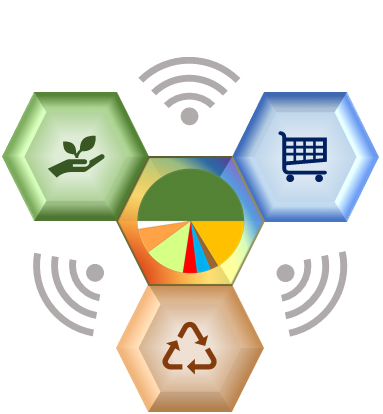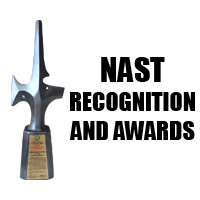
| The logo shows the central importance of consumption in shaping the food system. The intimate link among the 4 components of the system is shown by the tightly linked hexagons. The use of hexagon itself is symbolic because it is a shape commonly seen in nature. It is the ultimate in efficiency as mathematicians discovered. The circularity of the system, the use of Fourth Industrial Revolution tech, as well its overwhelming impact outside of the system is shown by the radiating waves. |
BICUTAN, TAGUIG ─ The Vision “Feeding Metro Manila in 2050” ranked one of the top 14 out of 1,300 submitted entries and was conferred a “Special Mention” in the Food System Vision Prize, launched by The Rockefeller Foundation, in partnership with SecondMuse and OpenIDEO. This was formally announced on August 6, 2020. The Manila team, led by Academician Eufemio T. Rasco, Jr. from National Academy of Science and Technology, Philippines (NAST PHL), will receive $25,000.
Feeding Metro Manila in 2050 was showcased as a system that nurtures the health of the people and the planet, adapts to changing climate, and is sensitive to the diversity of food culture. It was envisioned as the typical 2050 dinner plate as diverse, mostly plant based with less rice and highly processed grains, and assembled by a robust app that considers an individual’s nutritional and health needs and capabilities, impact of the meal composition on the environment, local food culture, and farmers’ welfare.
Dr. Rasco, Jr., along with his team, saw Metro Manila’s role as cultural center and trendsetter. According to him, if food habits change in Metro Manila, the rest of the steps in the food system and the rest of the country will follow. He added that correcting a dysfunctional food system is the key to solving Metro Manila’s major problems together with the continuing technological and policy improvements. He said that these will be needed to guide consumer behavior, to assure the farmers and fisherfolk of sustained productivity and greater share of production and marketing profits, and to cultivate better cooperation between farming and consumer communities.
The Vision Feeding Metro Manila in 2050 was supported by the Department of Science and Technology (DOST) Secretary Fortunato dela Peña on its initial implementation. The Philippine Chamber of Agriculture and Food Inc (PCAFI), De La Salle University, Araneta, University of the Philippines SPICE Project, East West Seed Company, Coalition for Agricultural Modernization of the Philippines, Pambansang Kilusan ng mga Samahang Magsasaka .(PAKISAMA), Urban Agriculture Philippines, Management Association of the Philippines, ABCDE Foundation, Young Professionals for Agricultural Development, Philippine Chapter, PhilRice, National Research Council of the Philippines, De La Salle University Manila, Institute of Plant Breeding, UPLB, and Kapisanan ng Magsasaka, Mangingisda at Manggagawang Pilipinas Inc. were among the institutions and organizations who helped and formed the team in building the Vision Feeding Metro Manila in 2050 for over 10 years. (Ruth Ann DL. Recto / NAST PHL)











